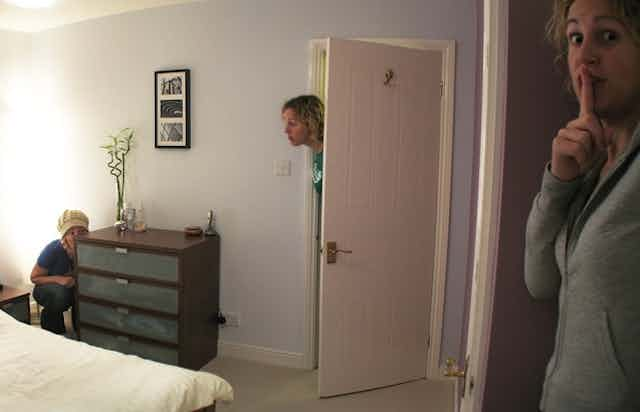You may have seen reports over the weekend about yet another instalment of the US National Security Agency’s (NSA) surveillance system - this time a set of slides focused on cracking the Tor network, a popular method of staying anonymous online.
Developed at different stages with financing from the US military’s Defence Advanced Research Projects Agency (DARPA) and the Electronic Frontier Foundation (EFF), Tor is a network of mutual anonymity.
But now it seems even this seemingly uncrackable network is under some degree of surveillance by the NSA and its British counterpart, the Government Communications Headquarters (GCHQ).
So how much surveillance, exactly?
You’re always being watched
Many companies track your patterns of movement online. You can be sure Facebook, Twitter, Google, and YouTube are doing their best to make money from your online activities.
Former NSA employee Edward Snowden recently revealed some of the operations of the US security apparatus, and the extent of their data capture is – to put it mildly – frightening.
It’s frightening because none of us can effectively do anything about being automatically captured by the covert surveillance of NSA’s PRISM infrastructure. If you are electronically within three degrees of separation from anyone who has travelled through the US, then you’re under assessment.
Thanks to journalists such as Glenn Greenwald, the details of the NSA are fast becoming a matter of public record. Events like 9/11 and the Boston Marathon bombings mean that, for some, the NSA’s operations are a perfectly appropriate and necessary part of the modern state.
But other users - assuming something similar to the NSA was already in operation - have developed networks like Tor to protect against surveillance.
Tor: total anonymity?
Tor was designed, apparently, to protect communication between political dissidents, and to allow everyday users to avoid location-based snooping.
It is because of Tor that you are aware of the death tolls and atrocities in the wars in Iraq and Afghanistan; it is through Tor that civilian video in Syria gets uploaded to LiveLeak. Tor is used by hackers in Mexico to combat drug cartels.
It has also been put towards all sorts of illegal activity – online criminal syndicates, child pornography, terrorism networks, drug cartels (notably the now-defunct Silk Road), and even the shady end of police departments are accessible through Tor.

Tor is such an effective anonymisation device for criminals that it makes the surveillance of regular individuals through Facebook and Google largely ridiculous.
Tor operates by transferring data between members using many layers of encryption to hide the contents. The encrypted data is sent along a randomly determined path. Each computer along the path unwraps a layer of encryption, and then determines who is next to get the data packet. Eventually, the data request makes it to the correct computer, and a response is sent back in the same manner.
Any sort of internet connection can be made through a Tor network – HTML web browsing, piracy torrents, email, Internet Relay Chat, and so on and so forth. To an external observer, the network looks like a game of Chinese whispers. For someone observing a computer acting as a relay for these messages, it isn’t possible to determine which messages going in correspond to which messages going out.
At an exit node, however, all connections are “in the clear”. This is the point where surveillance operations have managed to intervene so far. Now there is concern that government surveillance may be able to expand beyond this, and crack the whole Tor network wide open.
Completely cracked, or just a scare campaign?
The most recent news pieces detail how Tor is “close” to being compromised, or that it can be hacked or cracked.
The disclosures include PowerPoint slides from the NSA in 2007 referring to the Tor problem (or, according to the slides, “Tor Stinks”), and then again in 2012 noting the continuing difficulty that Tor poses for surveillance.

The messages around these stories are largely the same as stories of security breaches from 2010, but with some indication that there has been a small degree of success.
The NSA admits in their slides that it will be impossible to do anything other than track a very very small number of users.
Metrics on the Tor network have absolutely skyrocketed in the past two months, more than quadrupling since mid-August. This coincides with the release of the custom-made Pirate Browser – a free and easy way to connect to the Tor network.
This is possibly the reason for the recent press releases about the cracking of the network – it may be easier to scare people away from Tor, rather than cracking the network itself.
As the takedown of a Tor hidden service operator company Freedom Hosting shows, Tor is most vulnerable to external attacks, such as physically removing servers.
It’s worth keeping in mind that the NSA is simply one of many organisations attempting to subvert the Tor network.
As much as the US government has become the nemesis of many privacy advocates, it is worth remembering that governments in Russia and China are well-known for their surveillance operations, and their frankly brutish response to dissident activity.
So while it isn’t 100% secure, Tor seems to be a pretty secure way to keep your online movements private.

